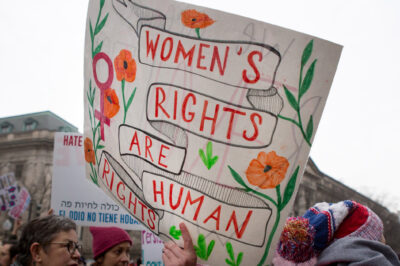
Last week, the Trump administration released its budget request to Congress and included a proposal for six weeks of paid family leave to new mothers and fathers, including adoptive parents. This paid leave plan is not as retrograde as the original plan, which, as we previously wrote, would have promoted sex stereotypes by limiting its benefits to married birth mothers. But the correction of that unacceptable error does not mean the replacement plan is satisfactory.
The devil remains in the details.
The most glaring of the many unknowns and flaws in the revised plan is the provision of paid leave to new parents only, with no provision for paid leave to take care of one’s own serious health condition or to care for a sick family member. This may seem like a case of half a loaf being better than none at all — working families are, after all, desperate for additional support. But the revised Trump plan ignores the lessons of history and would, in actuality, risk ushering in a whole new era of discrimination against working women.
The simple reality is that if employers are required to provide paid time off only to new parents, employers will consider female employees a more expensive liability than male and be less likely to hire or promote women. This is true even if that parental leave, on its face, is available to fathers as well as mothers, because employers will assume — based on stereotypes and experience — that women will be more likely to take the leave. Indeed, it was precisely to avoid employers’ reliance on these gender stereotypes that the Family and Medical Leave Act, a major milestone for workers and women’s workplace equality enacted in 1993, includes coverage on a gender-neutral basis for self-care as well as care of a newborn or other family members.
Who better to explain this than Justice Ruth Bader Ginsburg. In Coleman v. Court of Appeals of Maryland — a Supreme Court case analyzing the self-care provision of the FMLA, which provides 12 weeks of unpaid leave to eligible employees — Ginsburg explained why it was so important that Congress drafted the law in gender-neutral terms and why the self-care provision was essential to avoid sex discrimination in the workplace:
“A law providing special protection to women . . . in addition to being inequitable, runs the risk of causing discriminatory treatment. For example, legislation addressing the needs of pregnant women only might encourage discriminatory hiring practices against women of child bearing age. Legislation addressing the needs of all workers equally does not have this effect. By addressing the serious leave needs of all employees, the FMLA avoids providing employers the temptation to discriminate [against women].”
Having recognized that new mothers need leave for their own serious medical condition as well as to care for their newborn baby, Congress thus took steps to ensure that men with equally serious medical conditions would also be entitled to leave. According to Justice Ginsberg, this move was intended “to blunt the force of stereotypes of women as primary caregivers by increasing the odds that men and women will invoke the . . . leave provisions in near-equal numbers.”
Provision of leave for self-care and care of other family members was thus necessary not only to meet the real-life demands that face American workers. It was also necessary to “ward off the unconstitutional discrimination [Congress] believed would attend a pregnancy-only leave requirement,” and prevent the likely harmful consequences to sex equality in the workplace of providing parental leave only.
Current statistics have borne this out: Roughly half the people taking leave under the FMLA for self-care are men and half are women. For this reason, “[P]arental and medical leave . . . are inseparable,” Ginsburg wrote in Coleman. By failing to provide paid leave for self-care and care of other family members, Trump’s proposed parental leave plan runs precisely the risk of encouraging sex discrimination that the FMLA avoided by its broader coverage.
The devil remains in the details.
Trump’s proposal also ignores an existing alternative that would actually meet the needs of working families. The FAMILY Act, a bill pending in Congress, would provide women, men, and families 12 weeks of partially paid leave for (1) the birth or adoption of a child; (2) the serious health condition of a child, parent, spouse, or domestic partner; (3) one’s own serious health condition, including pregnancy and childbirth recovery; and (4) caregiving for members of the military. The broad coverage of the FAMILY Act recognizes that people get sick and may need time off to undergo surgery or chemotherapy or to care for a family member receiving such treatment, in addition to needing time off for pregnancy, childbirth, and to bond with a new baby.
Ultimately, like so many of his proposals, Trump’s parental leave plan is a double-edged sword — and women in the workplace would be the ones most at risk of getting cut. This is not a risk we should be willing to accept when it comes to America’s working families.
The ACLU is hard at work on the fight for comprehensive paid family leave. If you would like to join us in our federal, state and local advocacy, call your members of Congress and ask them to co-sponsor the FAMILY Act, fill out our survey, and also let us know if your employer provides unequal leave for different types of parents or family members. Working families deserve better, and together we can make comprehensive paid family leave a reality.



